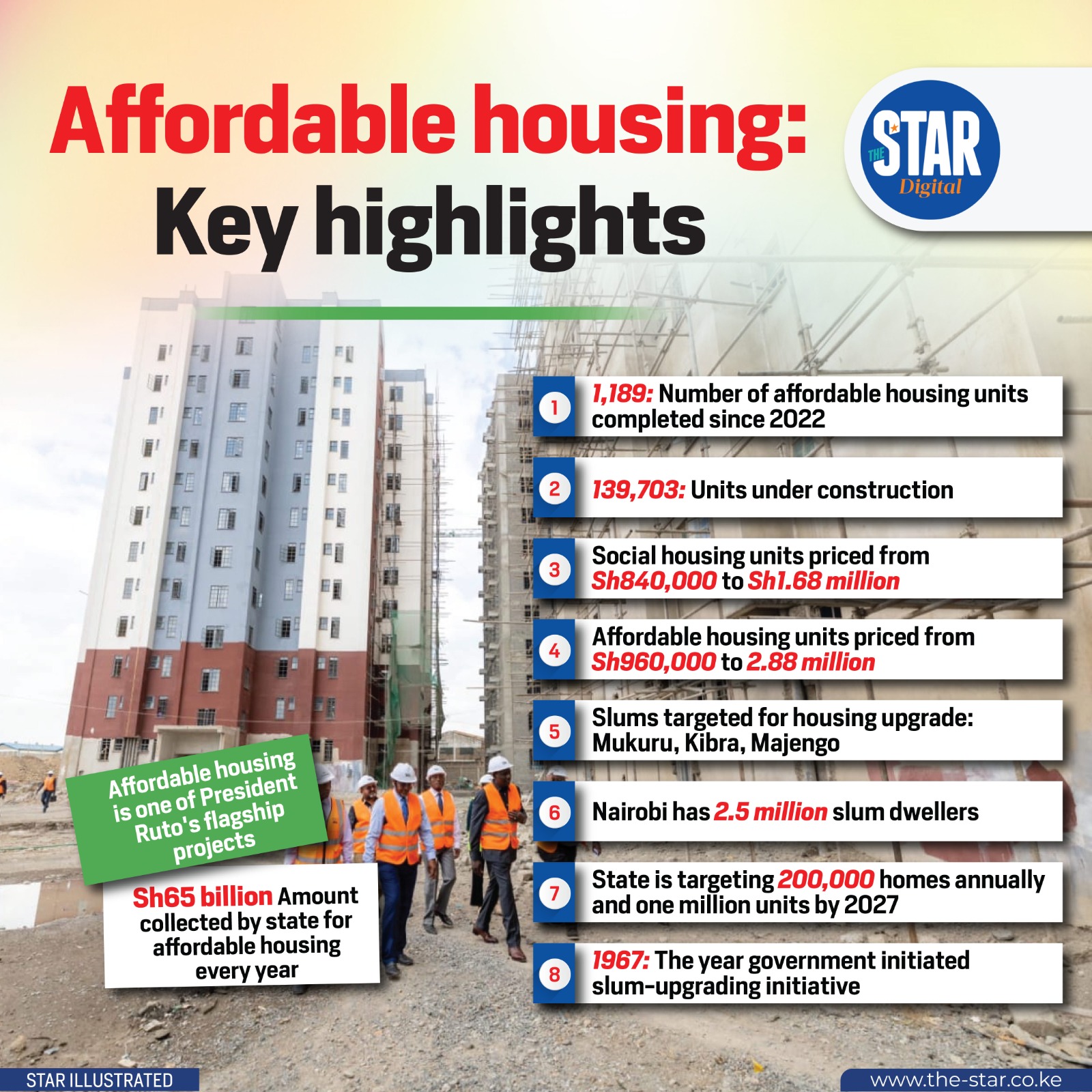The Housing Levy in Kenya, now officially enacted, represents one of the most significant policy interventions in the country’s real estate sector in recent times. Designed to create a sustainable funding mechanism for affordable housing, this levy has a multifaceted impact that extends beyond just the construction of new homes. It creates a dual effect, influencing both existing property owners and prospective buyers in various ways. In 2025, understanding these dynamics is crucial for anyone navigating the Kenyan real estate landscape. This blog post provides a deep dive into the dual impact of the Housing Levy.
1. The Purpose of the Housing Levy: Bridging the Housing Deficit
At its core, the Housing Levy is a mandatory contribution from salaried individuals, matched by their employers, designed to fund the Affordable Housing Fund. The primary objective is to address Kenya’s immense housing deficit, estimated at over 2 million units, by accelerating the construction of affordable, decent, and dignified homes for low and middle-income Kenyans. The government aims to deliver 250,000 units annually through this mechanism.
The levy is intended to create a steady and predictable revenue stream, reducing reliance on public debt and making affordable housing projects more financially viable for both the government and private developers involved in Public-Private Partnerships (PPPs).
2. Impact on Property Owners: Contributions and Potential Benefits
For existing property owners, particularly those who are salaried employees or employers, the most direct impact is the mandatory contribution to the Housing Levy. This represents a new payroll deduction for employees and an additional cost for employers. While this might be viewed as an increased burden, there are potential long-term benefits and indirect impacts for property owners:
- Increased Property Values (Long Term): If the levy successfully stimulates extensive urban development and infrastructure improvements around new affordable housing schemes, existing property values in those areas, and even adjacent ones, could see a gradual appreciation.
- Stabilized Rental Market: As more affordable units enter the market, the intense pressure on the rental market, especially in urban centers, might ease. This could lead to a more stable or moderately competitive rental environment for existing landlords, rather than runaway rental price increases.
- Improved Urban Environment: Successful affordable housing programs can lead to better planned and serviced neighborhoods, potentially reducing issues associated with informal settlements and improving overall urban living quality, which indirectly benefits all property owners.
- Potential for Future Access to Affordable Housing (for employees): Employees contributing to the levy may become eligible to apply for affordable housing units, which could be an opportunity for property owners looking to invest in additional, affordable rental properties or for their family members.
- Economic Stimulation: The construction boom fueled by the levy will stimulate various sectors of the economy (manufacturing, logistics, retail), which generally creates a more robust economic environment beneficial for property investments.
However, the immediate impact for salaried property owners is the direct deduction from their income.
3. Impact on Property Buyers: Opportunities and Accessibility
Prospective property buyers, especially those in the low and middle-income categories, are the primary beneficiaries of the Housing Levy and the affordable housing agenda. The levy's impact on them is largely positive:
- Increased Access to Affordable Homes: The core benefit is the accelerated provision of housing units at more accessible price points than the open market. This directly addresses the affordability barrier.
- Reduced Cost of Homeownership: The government's model aims to offer these homes with favorable financing terms, potentially including lower interest rates and longer repayment periods, making monthly installments more manageable.
- Structured Homeownership Pathway: For many, the affordable housing program offers a structured and clear pathway to homeownership that might otherwise be unattainable through traditional commercial mortgages.
- De-risked Projects: Government backing and direct funding from the levy may de-risk affordable housing projects, ensuring timely completion and quality delivery, which benefits buyers.
- Formalization of Housing Sector: By encouraging formal housing developments, the levy can help to reduce reliance on informal settlements, providing buyers with secure tenure and better living conditions.
- New Investment Opportunities: For investors looking to acquire affordable housing units for rental income, the increased supply (coupled with continued demand) could present new opportunities, particularly if specific allocation rules allow for it.
The levy represents a significant leap towards democratizing homeownership in Kenya.
4. Challenges and Considerations for Both Parties
While the benefits are significant, both property owners and buyers need to be aware of potential challenges:
- For Owners (Contributors): The immediate reduction in disposable income due to the deduction. Ensuring transparency and accountability in the use of funds is crucial to maintain public confidence.
- For Buyers: The allocation process for affordable homes needs to be transparent and fair. There might be competition for limited units, and the criteria for eligibility will be key. Quality of construction and location of some projects could also be factors to consider.
- Market Distortion: Some argue that direct government intervention could potentially distort market forces, though the scale of the housing deficit arguably necessitates such measures.
- Sustainability of the Fund: Long-term sustainability and management efficiency of the Affordable Housing Fund are critical for the continued success of the program.
Conclusion: A Transformative Force in Kenya's Real Estate
The Housing Levy in Kenya, with its dual impact, is set to be a transformative force in the country’s real estate market in 2025. While it introduces a new financial obligation for salaried Kenyans and employers, its overarching goal is to unlock widespread affordable homeownership. For property owners, indirect benefits like improved urban environments and potential value appreciation might emerge. For aspiring buyers, it represents a tangible pathway to owning a home, previously out of reach for many. The success of this ambitious initiative will ultimately depend on transparent implementation, efficient resource utilization, and continuous engagement with all stakeholders to build a more equitable and housing-secure Kenya.




